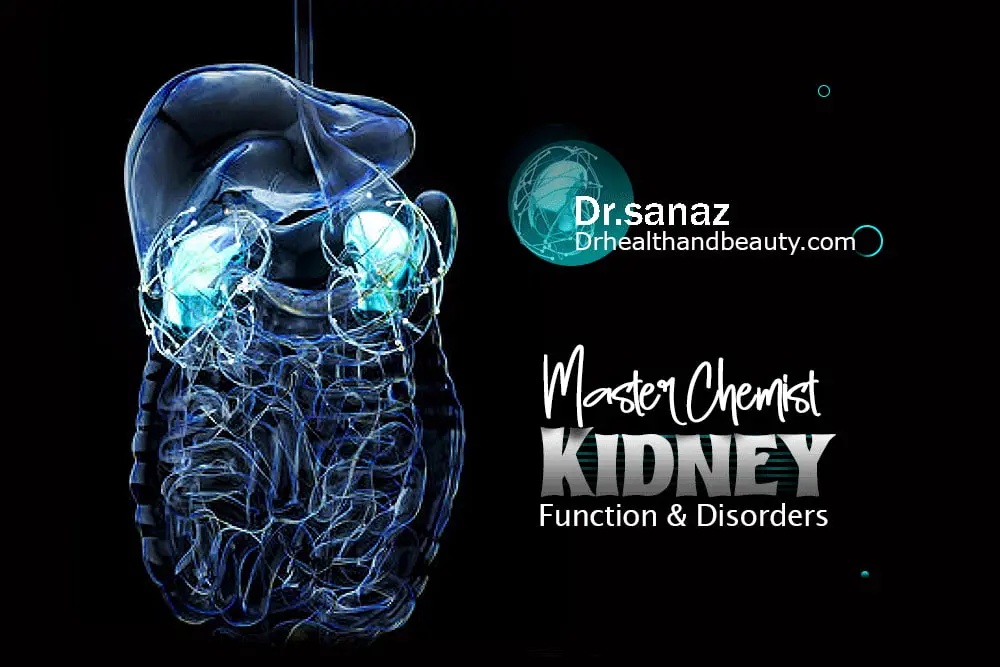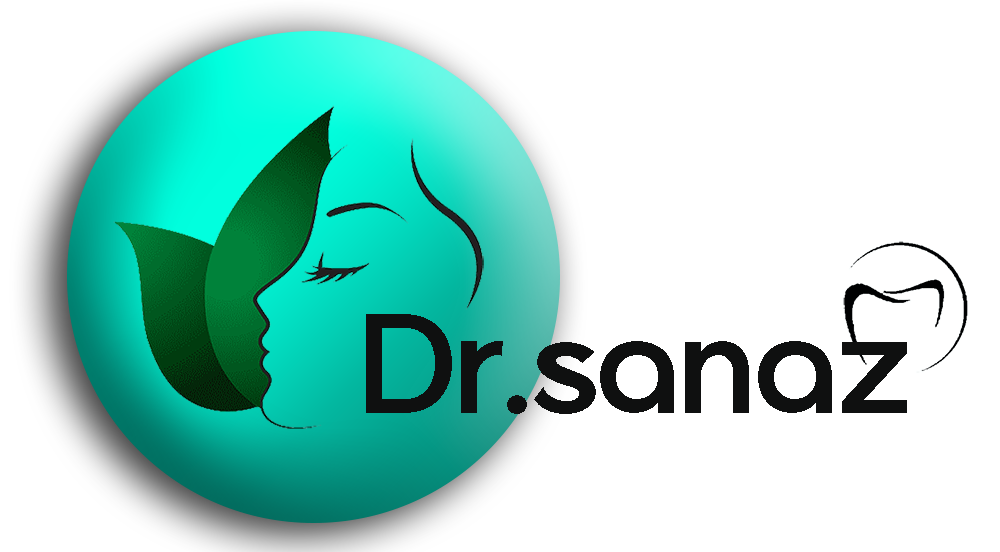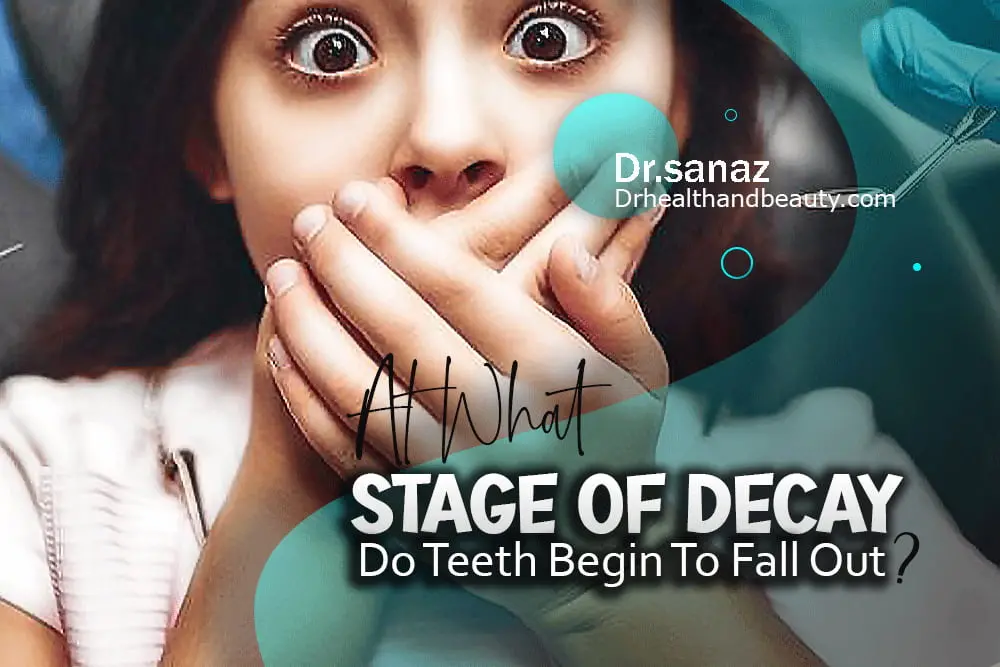

Kidney ( Master Chemist ) Function And Disorders
The content of this article is approved by “drhealthandbeauty” experts.
Note: This article is only to guide and increase your knowledge. Before taking any action, you can consult “drhealthandbeauty” doctors or your doctor for treatment.
The kidney is the most vital part of the body. Its dysfunction can lead to disease.
Severe and even death. It also has a very complicated structure and function.
Two important and main functions of the kidney include the elimination of toxins and waste materials, as well as the control of water levels and substances.
It is mineral and body chemistry and electrolytes such as sodium and potassium.
There are two kidneys in every person’s body. Each is about the size of a fist and is located on either side of the spine at the lowest level of the chest. Each kidney also has up to a million functional units called nephrons. A nephron contains a filtering part of tiny blood vessels called a glomerulus, which is connected to a tubule (tube).
Once the blood enters the glomerulus, it is filtered, and the remaining fluid is deposited along the tubule. In the tubule, chemicals, and water are added or removed from this filtered liquid according to the needs of the body, and the final product is the urine that we excrete.
The kidneys are responsible for filtering harmful liquid and return about 200 quarts of it to the bloodstream every 24 hours.
About two quartzes leave the body in urine, and about 198 quartzes return.
Therefore, the urine we excrete is stored in the bladder for 1 to 8 hours.
The excretory kidney is bean-shaped in most vertebrates. As part of the urinary system, the kidneys filter and eliminate waste ingredients from the blood.
Mainly, all the nitrogenous excreta resulting from protein and amino acid metabolism are excreted by the kidneys. One of these excretory substances is urea, which is excreted as urine along with water.
Kidneys show the remarkable coordination of the vertebrate body and cooperate with the circulatory system, digestive system, nervous system, and endocrine glands so that the body performs its tasks in an integrated manner.
Just as the kidney performs a function to maintain the health of the whole body and removes waste materials from the body, it also benefits from the function of other systems and organs of the body in order to maintain its health conditions.
Table of Contents
Kidney building
Kidneys produce urine in order to remove waste materials and regulate water and electrolytes. The urine produced in each kidney enters the bladder through the ureters, which are about 25 cm long, and then is excreted through the urinary tract.
Most people, both men and women, have two kidneys. The kidneys are located in the upper part of the back of the abdomen on each side of the spine and are protected by the lower ribs. Kidneys are a pair of bean-shaped organs. In adults, they are about 10 cm long, 6 cm wide, and 4 cm thick. Each kidney weighs about 150-170 grams.
The bladder is a hollow part of the body located in the lower and front parts of the abdomen and acts as a reservoir for urine.
The bladder of an adult has a capacity of about 400-500 cc. When it is almost completely filled, there is a feeling of discharge. Urinary tract: During the excretion phase, urine exits through this channel. The location, structure, and function of kidneys are the same in men and women.
- Kidney capsule
the membranous covering of the kidney is called the kidney capsule.
- Cortical part of the kidney
The outer layer that covers the inner medulla or the central part of the kidneys is called the renal cortex. This layer includes blood vessels, glomeruli (called kidney filters), and urinary tubes. The renal cortex is supported by a fibrous matrix.
- Hilus (Hilus)
The gap that exists in the middle of the concave inner part of the kidney for the transmission of nerves and blood vessels to the renal nephrons is called hilus.
- Renal column
The structures that support the cortical part of the kidney are called the renal column. The renal columns are composed of lines of blood vessels and ureters and a fibrous substance.
- Renal sinus
The cavity that houses the renal pyramids is called the renal sinus.
- Calyx
Slots in the central part that hold the pyramids are calyxes. Calyces are used to divide kidney segments.
- Papillae
The small conical tips along the wall of the renal sinus are papillae. They have holes through which urine passes into the calyces.
- Renal pyramids
These pyramids are the conical area in the central part of the kidneys. They contain secretory parts and tubules, and these pyramids are also called Malpighian pyramids.
- Renal artery
Two renal arteries enter the kidney from the aorta, each connecting to a kidney. This artery is divided into five branches, each of which reaches a capillary capsule. The renal artery supplies (unfiltered) blood to the kidneys. The left kidney receives about 60% of renal blood flow.
- Renal Vein
Filtered blood returns to circulation through the renal veins that join the inferior vena cava.
- Renal pelvis
The renal pelvis actually just receives urine like a funnel and transfers it from the helios into the urethra.
- Urethra
A narrow tube 40 cm long and 4 mm in diameter forms the urethra. Passing through the renal pelvis and helios, this duct goes down and finally reaches the bladder. These channels transport urine through the kidney to the bladder using peristaltic movements.
Medical terms related to kidneys include the prefix and suffixes “Renal” and “Nephro.”
Surgery to delete a kidney is called a nephrectomy, while a radical nephrectomy is the removal of the kidney, surrounding tissue, lymph nodes, and potentially the adrenal gland. Radical nephrectomy is performed to remove cancers.
Why are kidneys necessary for human life?
We eat different types of food during the day.
During the day, the level of water, electrolytes, and acids in the body changes constantly.
Converting food into energy during the day leads to the production of toxic substances in the body.
Changes in the content of water, electrolytes, and acids in the body and the accumulation of waste materials lead to damage to the body.
Kidneys are responsible for excreting waste and toxic substances, as well as regulating the level of water, electrolytes, and acids in the body.
What is the function of the kidneys?
The first function of the kidney is to purify blood and produce urine. Other kidney functions are described below:
– Disposal of waste materials
- Removing waste materials.
The materials we consume throughout the day contain protein. Proteins for growth and repair
The body is essential. But their consumption in the body leads to the production of waste materials. Accumulation and retention of this
Waste is similar to the accumulation of toxins in the body. Kidneys are responsible for excreting these substances.
Creatinine and urea are among the byproducts that can be measured and in
In the case of kidney dysfunction, their levels in the blood increase. Thus, their level
In the blood, it is a reflection of the reduction of kidney function.
- Excretion of excess body water.
The second most important job of the kidneys is to regulate the body’s water balance and remove its excess amounts. In case of disruption
In the function of the kidneys, it is not possible to excrete excess water, and due to its retention, swelling occurs.
- Maintaining the balance of minerals and chemicals.
Another important function is the regulation of the surface of mineral and chemical substances such as sodium, potassium,
Hydrogen, calcium, phosphorus, magnesium, and bicarbonate are in body fluids.
A change in the sodium level of the body can lead to a disorder of consciousness as well as a change in the level.
Potassium can cause disturbances in the heartbeat or muscle function. Preservation of phosphorus level
Calcium in the body is necessary to maintain the health of bones and teeth.
- Regulating blood pressure.
In order to control the blood pressure of the kidneys, various hormones such as renin, angiotensin,
They produce aldosterone and prostaglandin. In order to regulate the production of these hormones and
As a result of adjusting the water and sodium levels in the body, the blood pressure is adjusted. Any misalignment
These substances lead to an increase in blood pressure.
- Participation in the production of red blood cells.
Erythropoietin is another hormone produced by the kidneys. Its role in production
It is red blood cells. Disturbance in the function of the kidneys leads to a decrease in the creation of erythropoietin.
Disturbance in the generation of red blood cells and eventually anemia. Because of this, anemia
caused by kidney disease, in addition to vitamin and iron supplements to replace this hormone
also needs
- Maintaining bone health.
Kidneys convert vitamin D into active form. The presence of the active form of this vitamin in the body
It is necessary for the absorption of calcium from food, the growth of bones and teeth, and the preservation of their health.
Is Disturbance in kidney function, and as a result of reducing the level of the active form of this vitamin leads to
The growth of bones decreases, and their structure becomes weak. Growth disorder can be one of the signs.
Kidney diseases and disorders
Disorders and diseases related to kidneys are divided into congenital diseases and adult diseases. In this article, we introduce some of these diseases:
Congenital diseases
- Congenital Hydronephrosis:
Hydronephrosis, or kidney swelling, is a disease in which the pelvis and calyces are abnormally swollen due to blockage of the urinary tract. If this disease is not treated, it may cause the loss of kidney tissue.
- Congenital Obstruction of Urinary Tract:
In this disease, various parts of the urinary system, such as the kidney and its channels, may be blocked.
Duplication of the ureter (Duplicated Ureter):
This disease is a disorder in which two ureters or two ureters exiting from one kidney cause kidney failure.
- Horseshoe Kidney:
During embryonic development and as the kidneys move to their normal location, the kidneys sometimes become attached to each other. 1 out of every 500 children suffers from horseshoe kidney disease.
- Polycystic Kidney Disease:
In this disorder, multiple cysts (polycystic) are formed in both kidneys. This disease can also damage the liver, pancreas, and rarely the heart and brain.
- Renal Dysplasia:
In this disease, abnormal tissues are created in the kidneys, which disrupt their function.
- Unilateral Small Kidney:
In this disorder, an abnormally small kidney is born.
Diseases of adulthood
- Diabetic Nephropathy:
This disease is also known as “Kimmelstiel-Wilson Syndrome” and “Intracapillary Glomerulonephritis”. Diabetic nephropathy is a progressive kidney illness caused by angiopathy (general term for blood vessel disease) of the capillaries in the kidney glomeruli. In patients with long-term diabetes, this disease is associated with the excretion of protein from the urine or proteinuria, which leads to impaired kidney function.
- Glomerulonephritis:
This disease is caused by inflammation in the glomerulus and kidneys’s small blood vessels.
- Hydronephrosis:
Hydronephrosis is the enlargement of one or both kidneys caused by obstruction of urine flow.
- Interstitial Nephritis:
A type of nephritis (inflammation of the kidneys) that occurs in the interstitial cells of the kidneys around the renal tubules and ducts.
- Kidney Stones:
The deposition of compounds (with high concentration) in the urine causes the creation of kidney stones. Most kidney stones are caused by genetic factors, diet, and some underlying diseases. Most kidney stones are composed of compounds such as calcium oxalate, uric acid, sterol, and cystine.
.
Kidney tumors
- Wilms Tumor:
This type of cancer is also known as Nephroblastoma and is a malignant tumor that usually occurs in children. The global statistics of this type of cancer is one in ten thousand.
- Renal Cell Carcinoma:
Carcinoma is the most common type of kidney cancer arising from renal tubules. This type of kidney cancer occurs in affected adults in the form of hematuria (blood in the urine) without pain, with weight loss and pain in the spine.
- Lupus Nephritis:
This kidney inflammation disease is caused by an immune system disease called “Systemic Lupus Erythematosus” (SLE). In this disease, kidney function decreases, and the person may even need dialysis or a kidney transplant.
- Minimal Change Disease:
This disease is one of the common causes of nephrotic syndrome in children. Minimal change disease often occurs without a cause (idiopathic) in children.
- Nephrotic Syndrome:
In nephrotic syndrome, the glomerulus is damaged so that a large amount of protein from the blood enters the urine. Other frequent symptoms of nephrotic syndrome include swelling, low serum albumin, and high cholesterol.
Pyelonephritis: This disease is a kidney infection that is often caused by a complication of urinary tract infection.
Renal Failure:
Kidney failure is a situation in which the kidneys are not able to function properly.
- Acute Renal Failure:
Rapid and progressive loss of kidney function causes acute renal failure. Among the symptoms of this failure, we can mention a sharp decrease in the volume of urine and an increase in blood urea and creatinine levels.
- Chronic Renal Failure:
Unlike acute kidney failure, this type of kidney failure develops slowly in the body and causes few symptoms at first. Diabetes and high blood pressure can be mentioned as the main causes of this type of kidney failure.
- Kidney failure
In general, humans can live and function with only one kidney because humans have more kidney function than is needed to survive, possibly due to the nature of the past human diet. Chronic kidney failure occurs only when the function of the kidney tissue decreases to a great extent.
If the glomerular filtration level, or GFR (a measure of kidney function), is very low (end-stage kidney failure) or if kidney dysfunction leads to severe symptoms, then kidney replacement therapy is given to the patient. Such treatment includes dialysis or kidney transplantation.
.
Which people should refer to the laboratory for genetic counseling related to nephrology and kidney diseases?
- People who have the most common symptoms of kidney diseases.
- People who have a history of kidney disease in their family.
- People who do not have a history of kidney disease in the family but show symptoms similar to the symptoms of certain kidney diseases.
- People who have a suspected family history of kidney diseases are suggested to do genetic counseling (prenatal examinations are suggested to the families of affected people).
In which part of the body and where is the kidney pain?
The kidneys are on the sides, under the chest. The apex of the kidney is below the 12th rib. Therefore, the pain seen in this part is kidney pain. In general, diagnosing kidney pain is not an easy task for the patient and even the doctor.
To diagnose kidney problems and pains, the doctor recommends urine tests, kidney ultrasounds, and blood tests (creatinine). If no specific problem is seen in the ultrasound and the pains are not similar to kidney pains, the diagnosis is usually given that there is no problem and kidney disease.
.
What liquids are harmful to the kidneys?
Because grapefruit juice increases the risk of kidney stone formation, patients prone to calcium oxalate stone formation are advised to avoid drinking grapefruit juice. In addition, Qaraqat water, which is often recommended to help prevent urinary tract infections because it contains oxalate, is not useful for patients prone to kidney stone formation.
The best liquid is water itself. Natural fruit juice is also suitable, but the consumption of synthetic fruit juices and carbonated soft drinks is harmful to these people. Pale tea can also be used for those who cannot drink a lot of water. But be careful that strong tea increases stone formation and kidney disorders.
.
Is malted water effective for removing stones or preventing kidney stones?
No. Like other carbonated soft drinks, Ma’a al-Sha’ir contains a lot of oxalate, and its high and continuous consumption not only does not prevent stone formation but may also aggravate stone formation and cause kidney disorders.
.
Can kidney disease be successfully treated?
Many kidney diseases can be successfully treated. Careful control of diseases such as diabetes and high blood pressure can help prevent kidney disorders or prevent them from getting worse.
Urinary tract infections and kidney stones can be cured successfully. Unfortunately, the exact reasons for some kidney diseases are still unknown, and no specific treatment is available for them.
Sometimes, chronic kidney disease can lead to kidney failure, which needs a kidney transplant or dialysis. Treating high blood pressure with special drugs called angiotensin-converting enzyme (ACE) inhibitors often helps slow the progression of chronic kidney disease. Much research is being done to find more effective treatments for all conditions that can cause chronic kidney disease.
Conclusion
Your kidneys are part of your urinary system. The two kidneys are located in the back of your abdomen, just below your ribcage. They help your body filter waste products and excrete them as urine. Your kidneys are also important for generating:
- Hormones that keep blood pressure.
Red blood cells bring oxygen throughout your body.
- Vitamin D, which supports healthy muscles and bones.
Kidney disorders occur when the kidneys cannot adequately filter the blood and delete waste materials from the body. This disease can occur suddenly or develop slowly over time.
There are various kidney diseases that range from relatively common to rare and benign to fatal.

